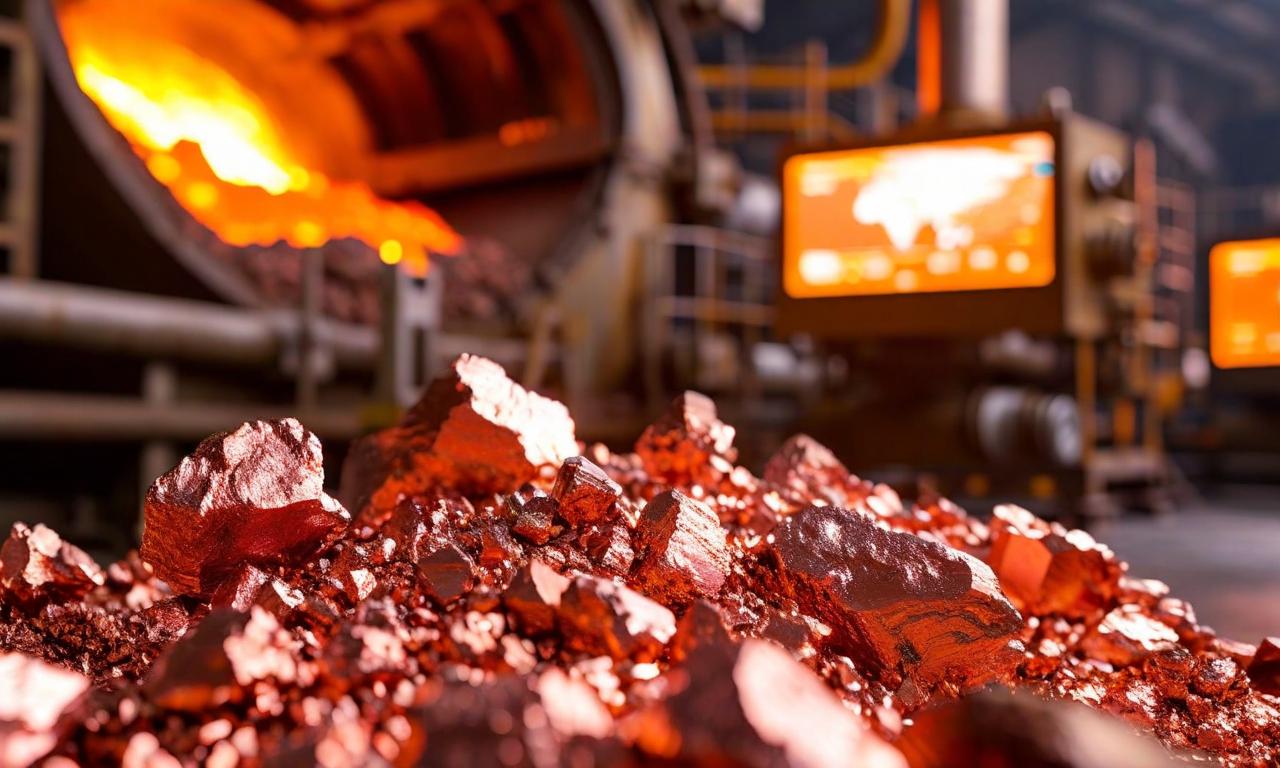Copper Futures Dip on MCX Despite Global Gains; Analysts Recommend Buy-on-Dips
MCX copper futures declined 0.20% to Rs 885.95 per kg, contrasting with positive trends in international markets. The U.S. imposed a 50% tariff on semi-finished copper products, causing a 4% plunge in MCX copper futures. Global factors like the suspension of Chile's El Teniente mine operations and a 76% drop in copper stocks since mid-February are influencing prices. Religare Broking recommends a buy-on-dips strategy with a target of Rs 900-905, subject to clearing resistance at Rs 889-890.

*this image is generated using AI for illustrative purposes only.
Copper futures on the Multi Commodity Exchange (MCX) experienced a slight downturn, trading at Rs 885.95 per kg, marking a 0.20% decline. This local dip contrasts with the positive movement observed in international markets, where COMEX copper stood at $4.44 per pound and London Metal Exchange (LME) three-month contracts reached $9,687 per metric ton.
U.S. Tariffs Impact Indian Copper Market
The recent decline in MCX copper futures can be attributed to the U.S. government's decision to impose a 50% tariff on semi-finished copper products, effective August 1. This move triggered a significant 4% plunge in MCX copper futures, pushing prices to record lows near Rs 861.70 per kg.
Global Factors Providing Support
Despite the local pressure, some positive support for copper prices emerged from international events. Operations at Chile's El Teniente mine were suspended following a tunnel collapse, potentially affecting global supply and lending some stability to prices.
Inventory Dynamics
The copper market has witnessed a dramatic shift in inventory levels. Available copper stocks have plummeted by 76% since mid-February, primarily due to accelerated cargo movements to the United States. This surge in shipments is largely in response to ongoing import investigations in the U.S.
Market Outlook and Trading Strategy
In light of these market dynamics, Religare Broking has issued a strategic recommendation for copper traders:
- Strategy: Buy-on-dips
- Support Levels: Rs 879-881 per kg
- Stop Loss: Below Rs 870
- Target Price: Rs 900-905 (contingent on clearing resistance at Rs 889-890)
Market Implications
The current scenario presents a complex picture for copper traders and investors:
- International prices show resilience
- Indian market faces headwinds from U.S. trade policies
- Significant reduction in copper stocks
- Production issues in Chile add uncertainty
Traders and investors are advised to closely monitor both domestic and international factors affecting copper prices, including further developments in U.S. trade policies, global supply disruptions, and inventory levels across major exchanges.





























